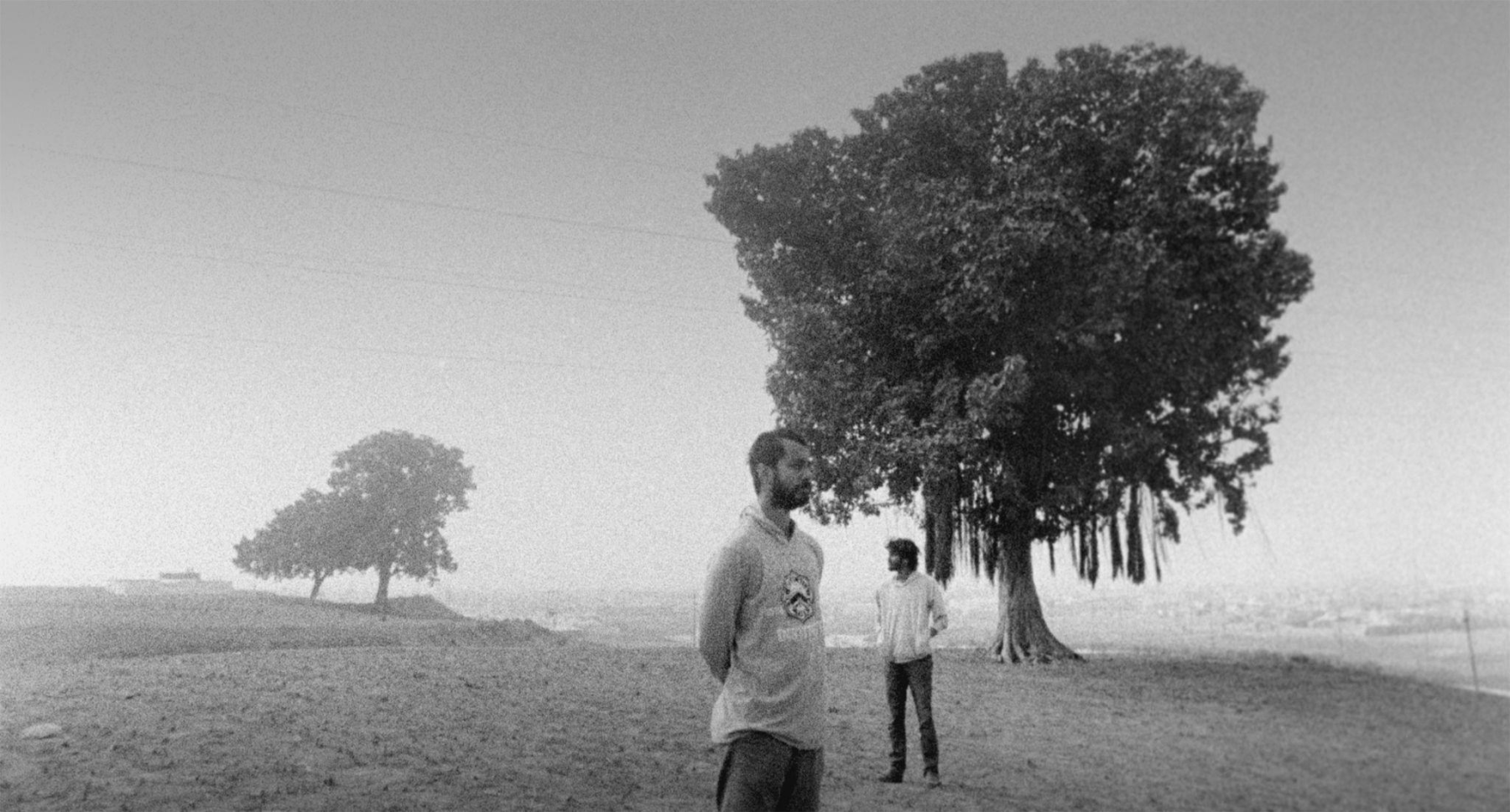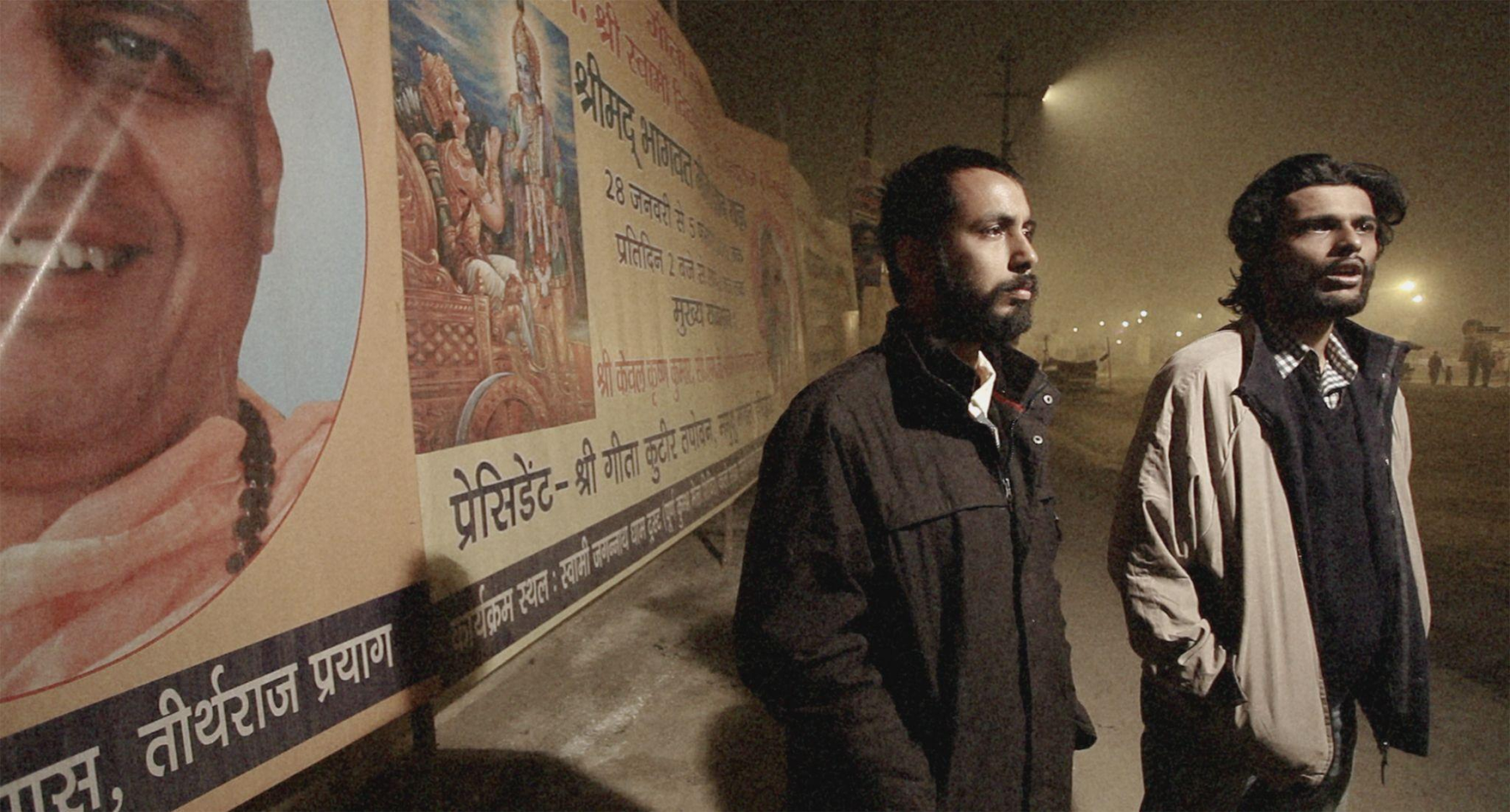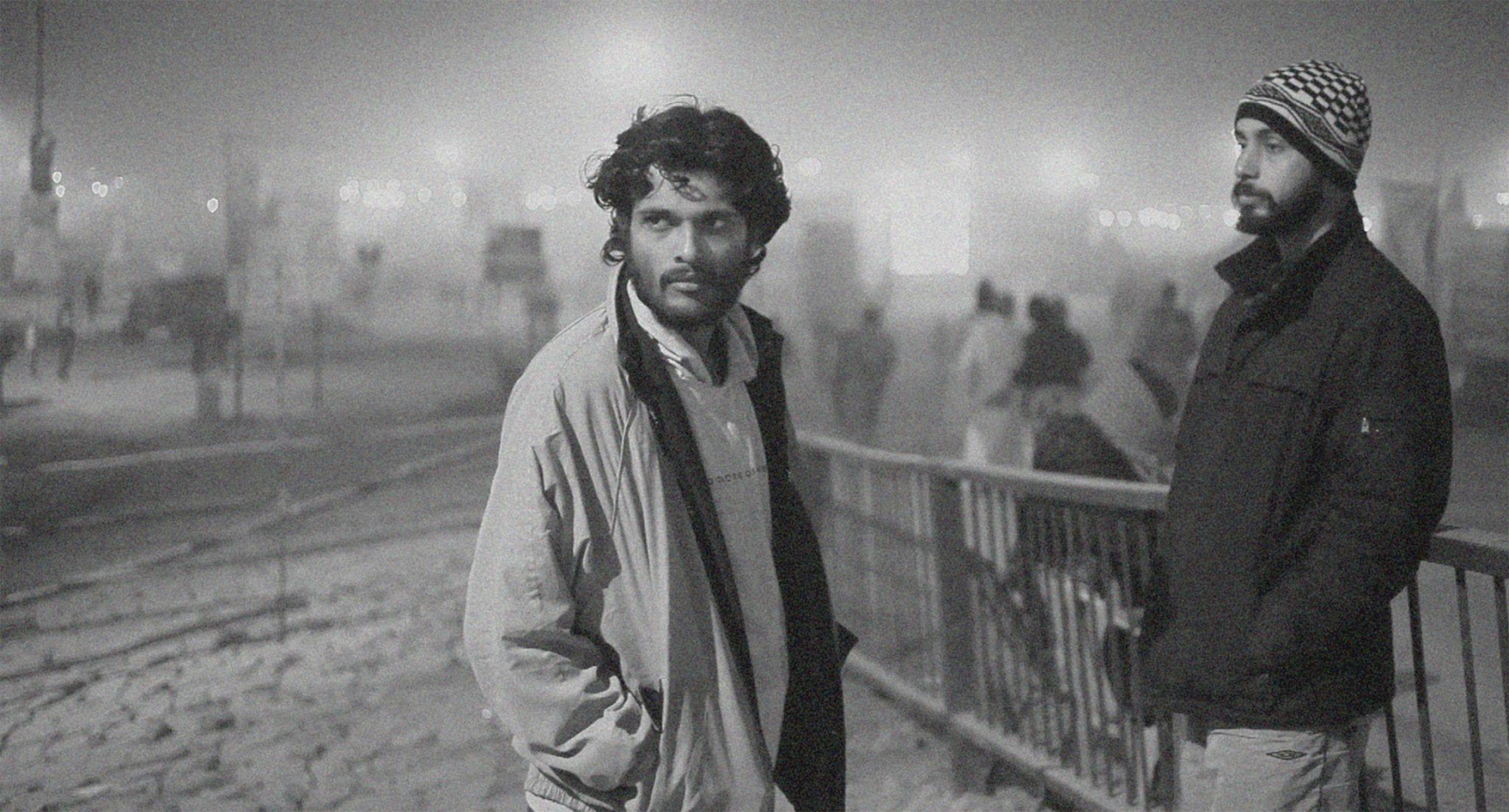Texts and Contexts: Revisiting Kalkimanthankatha
In Kalkimanthankatha (2015), filmmaker, archaeologist and social anthropologist Ashish Avikunthak pitches his thesis upon a motley triad: Samuel Beckett’s Waiting for Godot (1949), the iconic absurdist narrative of postmodern disorientation; Mao Tse-Tung’s Little Red Book, a resounding champion of agential modernity; and the premodern spiritual landscape that is the Maha Kumbh Mela in Allahabad. Each text, in its own right, speaks to the unassimilable complexity that has undergirded the development and history of Indian social thought over centuries. The film weaves together diverse (and not necessarily miscible) thematic and formal concerns in its attempt to apprehend the metaphysical tension at the heart of Beckett’s play, through the prismatic lenses of contemporary Hindu religiosity and the communist narrativisation of history.

As Avikunthak often mentions at screenings, Kalkimanthankatha is not so much an adaptation of Beckett’s work as a searching commentary on it. To that end, the film resists its mother text’s diktat to generate a fresh idiom for the spectres that haunt a certain typified contemporary Indian male consciousness. In fact, it borrows and translates only the first few scenes from Beckett’s play, limiting direct engagement with the text to the initial dialogue between Vladimir and Estragon before the entry of Lucky and Pozzo.
Both Beckett’s Godot and Mao (inasmuch as he represents the spring thunder of revolution) are, like Kalki, extraordinary figures of a future that never explicitly manifests itself in experience. This forever-postponed arrival of revolution was integral to the mythos of Communist Bengal, in which Avikunthak spent his childhood and adolescence. And it is the ghost of this revolution that appears in the film in the form of Mao’s Little Red Book, functioning as a stunning meta-emblem of an ontology yet to arrive, an eternal futurity that is sometimes awaited and sometimes, more desperately, sought.

The particularity of Avikunthak’s translation, in turn, shapes the semiotic impulses of the work. The two characters speak a complex Bangla, marked by the poetic inflections of dramatic speech and the self-conscious meditative quality of a soliloquy. This is a register that evades colloquiality and necessitates a Bangla-speaking audience’s entry into a new language world, one that is separate from the linguistic paradigm they otherwise inhabit. At a screening of the film held in New York, Avikunthak says that this fashioning of an alien Bangla was a deliberate intervention on his part to create a mode of cognition, driven by performativity and orality, that would differentiate itself from quotidian speech. In many ways, the dialogue of the film interrogates the limits of articulation in symbolic language, staging instances of linguistic wrestling with the ineluctable, in line with Beckett’s own metatextual preoccupations.
The search for that which cannot be spoken in Kalkimanthankatha is marked by the use of the word onushondhan, which is key in representing this activity as an agential and purposeful one as opposed to the more resigned and passive “waiting” of Vladimir and Estragon. This is embodied and simultaneously disembodied in the enigmatic figure of Kalki in the Hindu pantheon, who is an epistemic marker of the ever-receding Messianic future. He is the principle of non-absence in Hindu theological discourse, set to arrive imminently and rescue the world from the clutches of sin, yet always missing in action. The two characters ponder at length upon Kalki’s (un)identifiability—though they claim to have encountered him before, during the great and phantasmagoric churning of the oceans. They wonder aloud again and again: How are we to recognise Kalki when he arrives? What violent instruments shall he deploy to make himself known? What wars shall he unleash?

To learn more about experimental films, read Ankan Kazi’s essays on Payal Kapadia’s film The Last Mango Before the Monsoon (2015), you are, i am (2021) by Sibi Sekar and Letter From your Far Off Country (2020) by Suneil Sanzgiri.
All images from Kalkimanthankatha (2015) by Ashish Avikunthak. Images courtesy of the artist.




